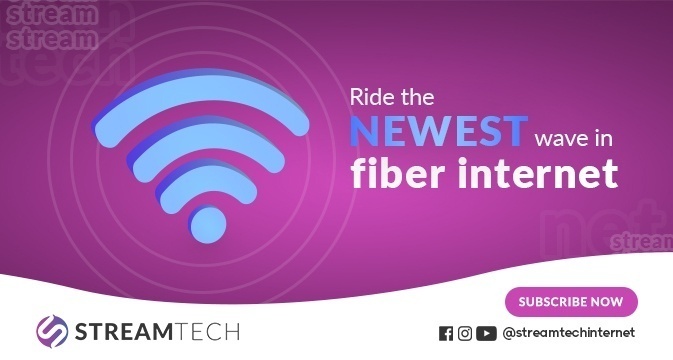The Philippines is one of the most active countries on social media. The rise of social media among Filipinos can be attributed to the increasing popularity of smartphones and internet connectivity. Because the country has one of the highest rates of internet access in the world, social media platforms have experienced tremendous growth in recent years.
Social media are utilized by people on a daily basis. You can use these platforms to communicate with others, share your thoughts and feelings, and stay connected with your family and friends. You can also use them for entertainment purposes such as watching videos or playing games and for news consumption. Similarly, if you have an awesome mobile data or fiber internet connection from a trusted internet provider in the Philippines, you may reap even more benefits from these social media.

You might want to check out these related articles that we have:
- How is social media changing the way we communicate?
- How is social media changing the Filipino culture?
Internet users in the Philippines
According to the digital reports of research portal DataReportal, the Philippines had 73.91 million internet users, in January 2021. Between 2020 and 2021, the number of internet users in the Philippines rose by 4.2 million. In January 2021, 67.0 percent of Filipinos have access to the world wide web.
Social media users in the Philippines
Based on the same report, in January 2021, the Philippines had 89.00 million social media users. Between 2020 and 2021, the number of Filipinos using social media climbed by 16 million. In January 2021, social media users in the Philippines accounted for 80.7 percent of the overall population.

Most used social media platforms
With so many social media sites on the web, we have come up with a list of popular social media platforms in the Philippines. This list is based on various sources including a nationwide survey conducted last year by Pulse Asia, as well as communication apps ranking from different research portals and downloading sites.
1. Facebook
In the Philippines, having a Facebook account is practically common among internet users (99 percent) who have social media accounts, according to a 2021 survey conducted by Pulse Asia. Facebook is the most used social media platform and one of the most effective digital marketing channels in practically every way. It is without a doubt the most powerful force in the social media industry in terms of scale.
In terms of demographics, Facebook is one of the most extensively used or diverse social networks. Almost every demographic relevant to the business may be found here, including senior citizens. Because users must provide their actual names and personal information when registering, it will be easier to utilize targeted advertising for certain user demographics when utilizing Facebook’s advertising tool.
Businesses may connect with targeted consumers and showcase their brands, goods, or services through numerous channels provided by Facebook. Business success on Facebook, on the other hand, comes from cultivating long-term connections with your audience rather than selling or pushing your products. It’s still a people network, not a brand or a logo. As a result, using Facebook to engage with actual people in a more meaningful way may assist businesses in generating important leads who will frequently turn into devoted customers or followers.
2. Youtube
Following Facebook, another popular social media platform used by many Filipinos is Youtube. When it comes to online videos, YouTube is unquestionably the dominant force. YouTube has over a billion monthly viewers who watch up to 6 billion hours of video, with at least 100 hours of fresh video content added every minute.
The popularity of YouTube was based on people’s natural inclination to rely or depend more heavily on visual material. And, when it comes to visuals, video outperforms all other types of media. It’s a good way to offer appealing visual assets to targeted audiences, with the potential for truly good ones to go viral and reach millions of people throughout the social media realm.
In order for internet consumers to pay attention and watch the complete material, videos should be brief, like no more than 1.5 minutes, and engaging. Videos that lag, are overly lengthy, or are dull will not help people get their message through.
3. TikTok
TikTok, another popular trending platform that exemplified the feel-good side of the past year, witnessed its most significant increase to date. Creators of all ages, from generation Z to millennials and even baby boomers, put their talents and creativity to good use by transforming the app into a pleasant area where people can come together for entertainment, pleasure, and learning.
TikTok is a Chinese-owned social video-sharing app that debuted in 2016 and quickly gained traction in East Asia, South Asia, Southeast Asia, the United States, Turkey, Russia, and other regions of the globe. TikTok had over 2 billion smartphone downloads worldwide as of October 2020.
Users may use a smartphone app to make a 15-second video of themselves, which commonly includes music in the background. Videos may be sped up, slowed down, or filtered. Among other things, they can add their own sound to the background music.

4. Instagram
Some 17 million Filipinos have Instagram accounts that comprise 15.4% of the entire population in the country, as of May 2021. This social platform has millions of active users who interact with postings. Likewise, when it comes to marketing companies, Instagram has the largest engagements among social media networks.
We all know that Instagram began as a photo-sharing program, but it has now expanded to include video uploads and product sales. When it comes to digital marketing, visual material has become the most effective strategy. The “IG Story” is an Instagram feature that is not only interactive but also serves as a platform for displaying high-quality visual material. It has been frequently utilized for promotional purposes by a variety of businesses.
People will recall what they see with an 80 percent possibility. As a result, it is recommended to submit images or photographs that are attractive to the eye of your target audience.
5. Twitter
If you’re searching for a way to swiftly communicate brief, direct updates to a specific group of people, Twitter is the place to go. Brands may take advantage of this popular social media platform, which has millions of monthly visitors, by using breaking news and popular topics highlighted with hashtags.
Like text messaging on phones, Twitter is an excellent tool for sending rapid and brief messages to a large number of people. Twitter relies on real-time updates, breaking news, callouts, inquiries, or quick comments or opinions to engage with other users, unlike other platforms where users may save information for later viewing.

Twitter tweets that rely on real-time updates or breaking news might do well if done numerous times a day and at appropriate periods throughout the day.
6. Messenger
In terms of Instant Messaging (IM), Facebook Messenger emerged as the most popular messaging tool among Filipinos. Messenger can do nearly all of the functions of the other chat apps. Stickers? Those are available in Messenger. Do you want to attach files? It’s got that, too. Perhaps, it is also because it is linked to Facebook, the country’s de facto social networking site.
Messenger was first released in 2011, and its success prompted the creation of a separate app and website in 2014. The app and website are an instant messaging service that links to Facebook’s database and has replaced Facebook’s in-app messaging function. It enables Facebook users to communicate with one another and send instant messages, images, and videos, among other things.
You may now give money to pals over Facebook Messenger, according to a new upgrade. With the aid of Facebook Bots, you can receive the weather and place product orders, as well as catch a quick trip with Uber and Lyft integration.
7. Kumu
Kumu is a Filipino-owned and operated social networking site. It’s an app that allows you to broadcast, play live games, and take part in Kumu’s numerous promotions. You may also simply hang around, check out the Kumunity’s various live streams, and meet and connect with other Filipinos. The options are limitless.
The Kumunity is powered by artists, educators, and regular Filipinos who use their own live stream channels to share their tales with the rest of the world. You may also take advantage of the possibility to make money by running a live broadcast through this platform.
Kumu also hosts live games that are honest, uplifting, motivating, and entertaining. Likewise, it is in association with well-known brands such as Lazada, Grab, and others.
8. Pinterest
Another standout performer when it comes to social media usage among Filipinos is Pinterest. During its early days, Pinterest was recognized as a site where housewives could post interesting things. These include recipes, photographs of bags, outfits, and cosmetics on pinboards. Since then, the network has grown to become one of the most popular places. Primarily, it is a hub to share visual material such as photographs, images, and videos.
Pinterest is a fantastic platform for companies concentrating on products and services aimed toward women. In fact, it has up to a 4:1 female user ratio. Fashion, cuisine, travel, events, interior décor, jewelry, home renovations, DIY, and other relevant topics would be of interest to the majority of ladies. Apart from its suitability for e-commerce firms, this platform may also benefit products and services that rely on visual aspects for branding.
9. Viber
Viber is one of the world’s most popular apps for free and easy communication. It grew in the Philippines in 2021, a year marked by strategic partnerships that responded to users’ changing needs. The same year allowed them to explore how the app can be an integral part of their daily lives beyond calls and messages.
As a chat and calling service, this platform brings people together. This is regardless of who they are or where they are from. Hundreds of millions of people connect with their loved ones for free each month through texting. And there’s also high-quality audio and video chats, and other services. End-to-end encryption is incorporated into all one-on-one Viber calls and personal chats. Additionally, the same feature is available for all group chats, so you can rest certain that your interactions are always safe.
10. WhatsApp
WhatsApp is a free smartphone communication software to download. It sends messages, photos, music, and video via the internet. The service is quite similar to text messaging services; but, because WhatsApp sends messages via the internet, it is substantially less expensive than texting. You may also use Whatsapp on your computer by visiting its website and downloading the program for Mac or Windows. Because of features like group chatting, audio messaging, and location sharing, it is quite popular among youngsters.
WhatsApp users may disclose their position in real-time through text messages. They may also use WhatsApp to organize contact lists. This is so that they can rapidly send messages to large groups of individuals in group conversations. The best benefit of WhatsApp is that it allows users to communicate with individuals who live in other countries without incurring the international text message rates.
11. Snapchat
Snapchat remains one of the favorite social media apps among Filipinos. It is mostly for communication via “snaps,” which are visuals that can be either a photo or a brief video. There are amusing filters you may apply to beautify or ridicule and embellish your photo or short video. And this is what makes this software even more engaging. Long-pressing on a face with a viewfinder activates this feature, which displays a variety of filters to pick from on the screen.
More and more users, particularly millennials, are finding Snapchat to be a fun means of communicating. This is seen by the proliferation of funny memes and Snapchat photographs on social networking sites such as Facebook, Instagram, and Twitter.
12. Telegram
Gradually catching up with other IM platforms among Filipinos in terms of internet usage, Telegram is another popular internet chat program. It operates similarly to WhatsApp and Facebook Messenger. When you’re connected to Wi-Fi or mobile data, you may utilize it to send messages to your pals. It is a cloud-based messaging service that promises to prioritize security and speed above other popular chat programs.
Telegram was founded by Russian Pavel Durov, who is also the founder of Russia’s largest social network VKontakte (VK). The app promises to combine the speed of WhatApp with the ephemerality of Snapchat. Telegram, like WhatsApp, allows users to view a friend’s status online, as well as attach and share images, videos, location, contacts, and documents.
Security is a distinguishing feature of Telegram. It says that all of its actions are encrypted, including conversations, groups, and material shared by individuals. This implies they won’t be displayed until they’ve been decoded.
Choose the best social media app via Streamtech

It goes without saying that social media have become a necessity for people. That is evident with the most used social media list above. However, with so many online communication tools that can perform a lot of functions and features, it’s easy to become overwhelmed. Thus, it is important to choose which social media platform will help you in your daily grind.
Just like your need to have the best internet connection. It is a must to choose the ultimate fiber internet afforded by a trustworthy internet provider in the Philippines. With Streamtech Home, you can satisfy all of your internet demands at home and even upgrade to the highest level of entertainment.
Because our internet services use fiber optic technology, each user receives a connection with parallel download and upload speeds, which is far faster than a traditional DSL connection. Because all-fiber plans provide unlimited bandwidth, they don’t have to worry about running out of data.
So what are you waiting for? Subscribe to Streamtech now!









